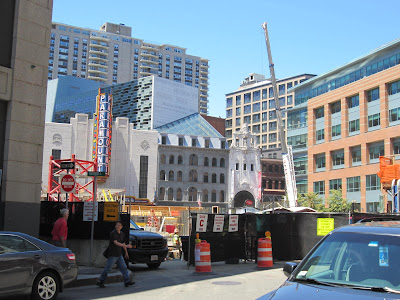This is a picture of the dry moat that surrounds part of the James Farley Post Office in Manhattan. As an urban gesture I find it acutely medieval and awful. I also am starting to form an opinion of the building (which I didn't know existed until a few days ago) which is acutely negative and unsympathetic. I regard it as an anachronism in the city of New York--a throwback to an earlier era, bereft of function, and a burden on the citizens of that illustrious metropolis.
But, it's a Historic Landmark, protected by the full force and blind might of the preservation movement. It's built on 8 acres of train tracks, so a vertical intervention would be astonishly expensive.
More on this subject later.











